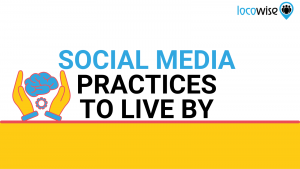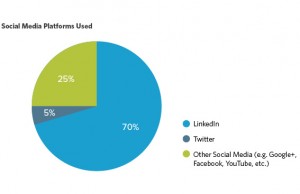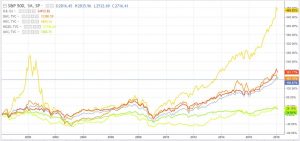Direct to consumer brands should focus their open web spend on formats and strategies that work within the mid-funnel, which means emphasizing content.
Act one of the direct-to-consumer revolution upended traditional marketing and distribution models as we knew them, and now all eyes are on the next phase of growth for these DTC darlings. Initial signs indicate that these challenger brands will be seeking new growth outside of the digital playgrounds on which they grew up (i.e., Google and Facebook).
As Terry Kawaja pointed out at LUMA’s annual Digital Marketing Summit, DTC brands have reached an inflection point that requires them to make a substantial shift to maintain growth. Likely pivots will include expansion into out-of-home advertising, physical retail and — most notably — television. In other words, these traditional brand disruptors are about to start looking a lot more like traditional brands.
Now that the low-hanging fruit at the bottom of the funnel is becoming harder to come by, DTC brands have been quick to shift focus to offline channels that are harder to measure. But what about the remainder of the open (and naturally measurable) web that these disruptors have yet to tap? Many DTC brands are missing out on an opportunity that’s right in front of them, where the assets used to create sponsored social posts can easily be repurposed to extend a brand’s reach across premium websites. The emergence of content-based ad formats paired with advanced buying platforms suggests DTC brands might not want to overlook digital as a path for additional scale quite so quickly.
Beyond the walled gardens
According to Magna, global advertising is showing its strongest growth since 2010. But, as many have been quick to point out, a great deal of that growth has been fueled by revenue gains at Google and Facebook. What’s perhaps most interesting, however, is where that Google and Facebook growth has originated. It hasn’t stemmed from the massive budgets of the Fortune 500 companies of the world, but rather the millions of small and mid-sized businesses (SMBs) that have flocked to the walled gardens. In fact, large national brands only account for an estimated 20-25 percent of total spending on Google and Facebook.
Among those SMBs we find, of course, the DTC challenger brands that have thoroughly disrupted so many industries in recent years, from apparel (Allbirds, Stitch Fix) to mattresses (Casper, Leesa). And while new disruptors are emerging daily, we’re starting to see some of the biggest names hit a point of saturation on these channels, with brands like Uber, HelloFresh and others beginning to seek new audiences in the realm of TV advertising.
But here’s the thing: The internet is bigger than just the duopoly. Google- and Facebook-owned properties reportedly account for about 27 percent and 16 percent of all time spent on digital media, respectively. And while those figures are formidable, so is the remaining digital media time. Why would today’s DTC brands be neglecting that digital opportunity for expansion in favor of a shift to traditional channels?
The need for self-service, better formats
Part of the reason DTC brands have invested so heavily on Google and Facebook is that it’s easy. As an advertiser, you don’t need a sophisticated agency or buying platform to tap into the massive scale of Google and Facebook. You just need an internet connection, a credit card and minimal creative assets. Furthermore, over time, the formats offered by the Duopoly have become increasingly attractive. Marketers have long known that banner ads aren’t the best vehicle for storytelling. Facebook started with banners off to the side of the feed but then moved toward high-impact native sponsored posts, which are both effective and mobile-friendly.
The combination of self-service buying with effective native creative executions endeared Google and Facebook to SMBs at a time that the rest of ad tech was heading another direction. As Ratko Vidakovic of AdProfs pointed out, the ad tech market essentially abandoned SMBs a decade ago. They did so when they embraced banners over richer ad formats and neglected to develop easy-to-use, self-service offerings with no minimum spend requirements. Ad tech decided instead to compete for the big brand and agency dollars, and in doing so, passed on the business opportunity inherent in millions of SMBs.
The good news for SMBs — and particularly today’s DTC brands that are looking to expand their efforts — is that a lot has changed in recent years when it comes to advertising on the open web. Compared to even just a few years ago, the ad tech industry is providing more self-service tools to SMBs and will continue to do so. Perhaps more importantly, the high-impact native formats to which DTC brands have become accustomed are increasing across the open web and proving useful beyond basic direct marketing tactics.
As DTC brands look beyond the walled gardens, they need to understand that the opportunity they harness on the open web is different than the one they tap via Google and Facebook, which are largely bottom-of-the-funnel plays. By comparison, most of the open web represents the mid-funnel, where prospecting happens. It’s where consumers turn to learn and shape their decisions. As such, advertisers should seek out ad platforms that are advanced in their capabilities to understand and cater to a person’s place in the funnel. Likewise, they need to focus their open web spend on formats and strategies that work within the mid-funnel, which means emphasizing content.
The ease and effectiveness with which SMBs can advertise on the open web have increased significantly, and today’s growing DTC brands need to look at the opportunities before them with fresh eyes. The time has come for them to expand their horizons, no doubt. But not all expansion opportunities reside in the offline world. There’s still healthy growth to be had in their native digital world.
Opinions expressed in this article are those of the guest author and not necessarily Marketing Land. Staff authors are listed here.
Marketing Land – Internet Marketing News, Strategies & Tips
(35)








